
Web3 is a decentralized network built on blockchain technology. But what exactly is a decentralized network, and how will Web3 change our everyday lives?
Nomura Securities is actively developing businesses to unlock the potential of Web3. You may wonder why Nomura Securities is involved in Web3. This article delves into the essence of Web3, explains Nomura’s involvement in Web3 businesses, and examines the potential of those businesses.
Web 3’s defining characteristic is the decentralization of information.
Thanks to advances in communication technology and the widespread use of smartphones, we are now constantly connected to the internet. The proliferation of social media has turned everyone into a content creator, enabling interactive information exchange between consumers and creators. This interactive network is called Web2.0, which differs from the earlier Web1.0, where information primarily flowed in one direction.
With Web2.0, anyone can participate, but the dominant players are large IT corporations known as Big Tech. While users have access to a wide range of internet services, their personal information, such as their name, address, and usage history, is managed by these organizations. Users usually have little insight into how their data is managed or used.
Web3 is a next-generation network designed to give people greater control over their own information. It is a decentralized network that allows digital data to be freely traded without the need for intermediaries. It promotes the use of open programs that anyone can build on to create new services. This system has the potential to drive significant social transformation.
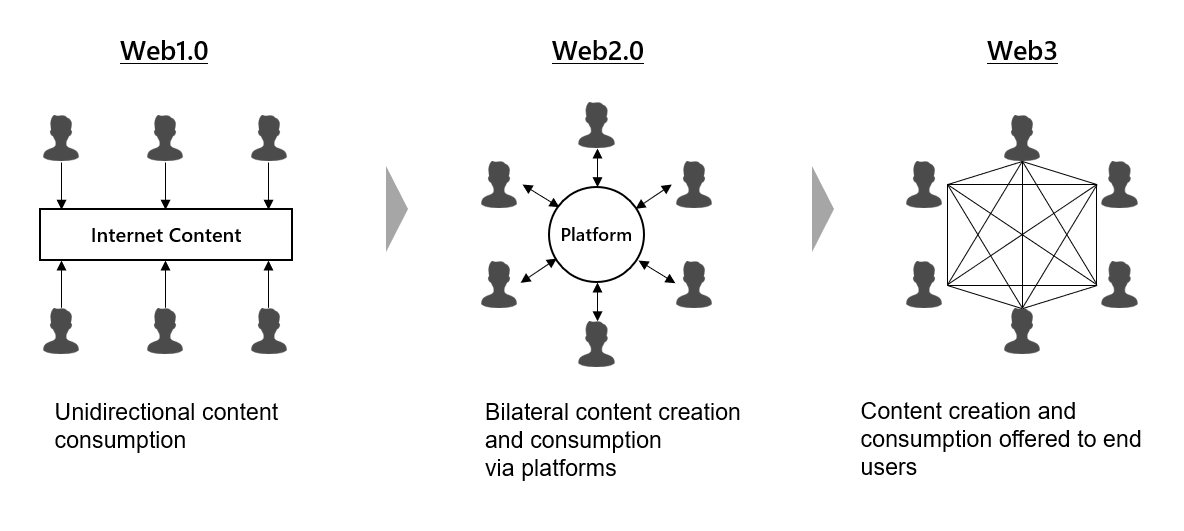
- 拡大
- Comparison of Web3 with Web1.0/Web2.0, users' perspective
Source: NRI Website – Knowledge Insight – Glossary – Web3 (translation: Nomura Holdings)
With no single organization controlling data and users able to prove ownership, a new concept called “digital assets” emerged. Digital assets on Web3 represent digitized rights such as currency, crypto-assets, securities, or usage and ownership rights that can be freely traded.
There are many kinds of rights around us, and many people use these rights in their daily life. Web3 supports a society where such rights can be created and traded more freely, laying the foundation for a futuristic social infrastructure.
Web3 is often mentioned alongside blockchain, but blockchain is just one of the many technologies shaping Web3.
Blockchain was created by an anonymous developer named Satoshi Nakamoto to enable a digital currency system called Bitcoin. Bitcoin’s primary goal was to ensure that no one could prevent you from sending your money as you wish.
Blockchain technology allows users to create accounts and transfer money without anyone’s permission (censorship resistance), ensures self-sovereignty, is resilient to data loss (fault tolerance), and makes recorded data hard to alter (immutability).
Although blockchain technology began with Bitcoin, its applications have since expanded to support a wide range of services that promote decentralized systems.
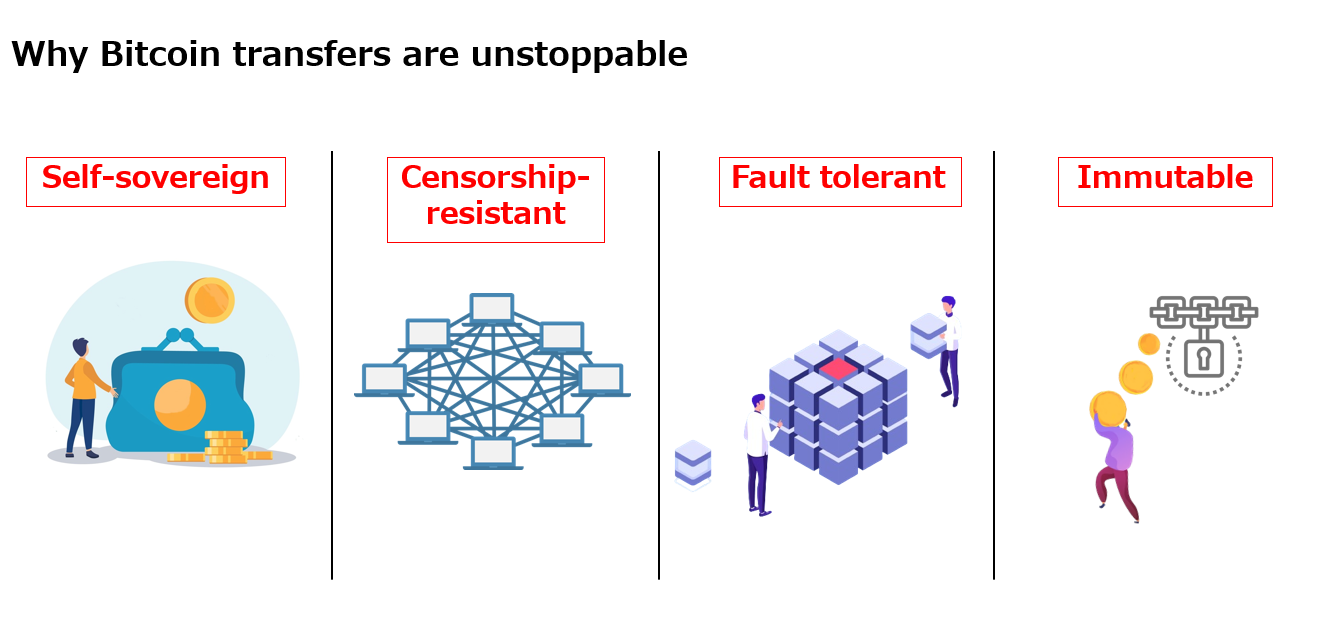
- 拡大
- Blockchain’s Four Advantages
What actual changes can Web3 bring?
First, Web3 addresses a key issue of Web2.0: users lack of control over their own information. While managing all your data might seem overwhelming, blockchain technology offers a system of “keys” that lets you control who can access your data. In other words, Web3 provides a new way for individuals to manage their own personal information, giving them more autonomy than Web2.0.
Having control over your own data eliminates the need for centralized authorities. For example, you could send money overseas or shop directly without relying on banks or companies, which could dramatically reduce fees and transfer times.
Moreover, decentralized networks built on blockchain enable tamper-resistant and fault-tolerant information management. This paves the way for innovative services and business opportunities, such as platforms that track product lifecycles, including manufacturing, distribution, consumption, disposal and collection. It also enables the creation of decentralized organizations that operate without specific managers, as well as marketplaces for NFTs (non-fungible tokens)—digital data that is difficult to alter.
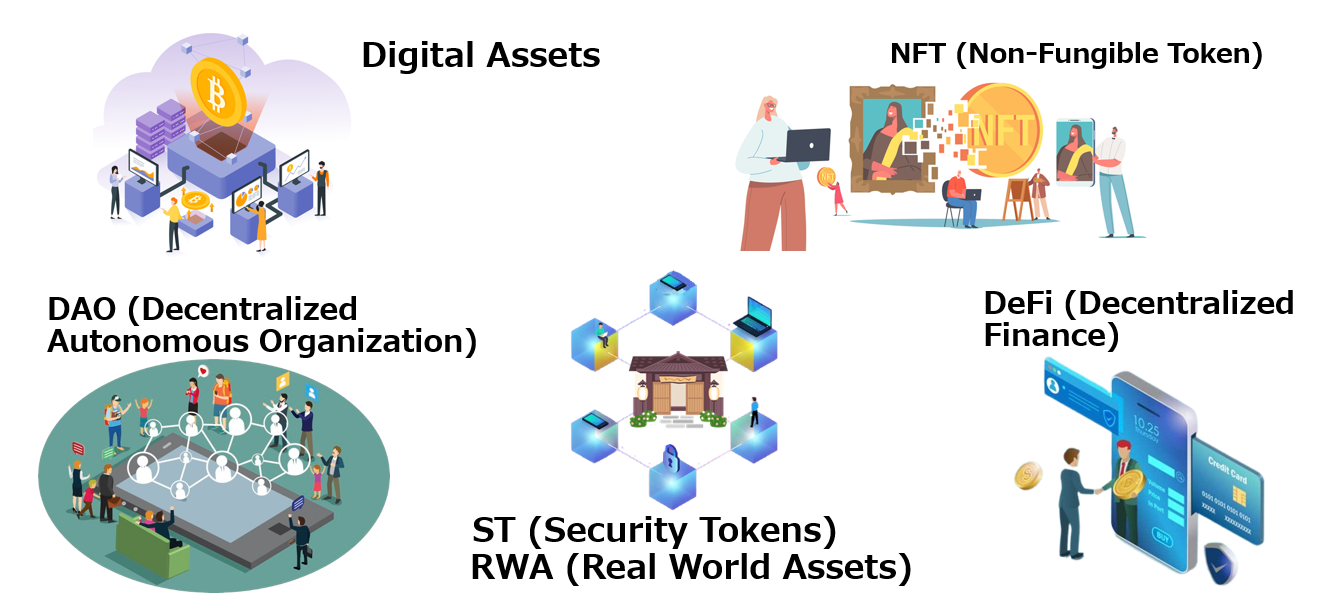
- 拡大
- Web3 Business Lines
Because blockchain was created to enable Bitcoin, Web3 is closely linked to financial services. Crypto assets are digital forms of value traded over the internet, including Bitcoin, Ethereum, and Ripple. The crypto market has a huge capitalization and is traded globally. Often referred to as “digital gold,” crypto assets have given rise to various new financial products.
Transactions usually take place on crypto exchanges. However, in overseas markets, crypto asset ETFs (exchange-traded funds) designed to track crypto prices, and securities backed by crypto assets, are traded on stock exchanges much like stocks or bonds. Some securities firms’ subsidiaries are involved in crypto trading and product development.
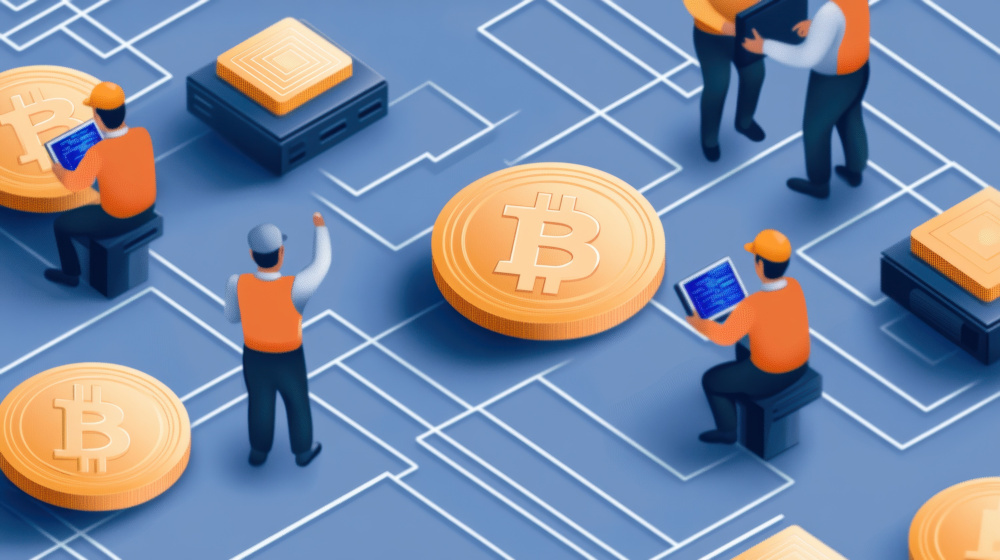
Digital assets in Web3 can also take the form of securities, making them investment products. The use of blockchain to manage securities holders has given rise to “security tokens,” or digital securities. These tokens are rapidly gaining traction, particularly in Japan where over 10 billion yen has been raised for real estate and corporate bonds.
Blockchain’s tamper-resistant features ensure transparency of transaction history. Additionally, digitizing securities enhances the efficiency of post-trade processing, enabling retail investors to participate in real estate investment opportunities once limited to institutional investors.
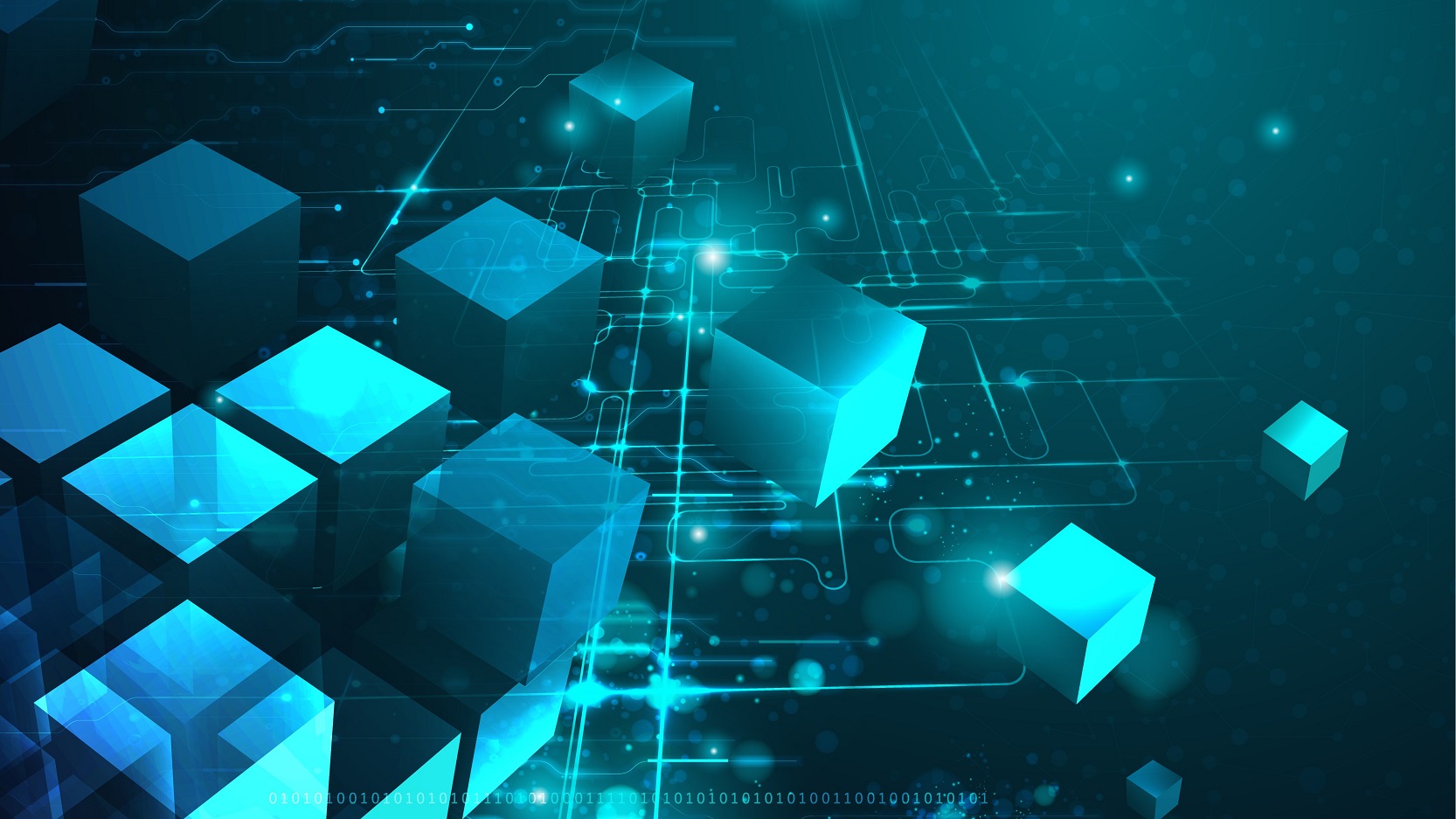
Since Web3 is decentralized, security tokens connect issuers and investors directly, bypassing financial institutions. While this could disrupt traditional finance, financial institutions can still play a vital role in supporting transactions and expanding product offerings. In this way, Web3 presents a great opportunity to evolve capital markets and financial services. Ultimately, the business potential will depend on how industries engage with this technology.
Given the strong connection between Web3 and finance, what is Nomura’s goal in this emerging field? We asked Toshinori Sasaki, Head of Digital Asset Strategy Office at Nomura Securities.
Nomura aims to create a digital market where “rights” can be freely traded, expanding the current financial and capital markets. These rights will include not only stocks and bonds but a broad variety of assets that can attract funding and engage fans. Nomura believes that this will enrich society by empowering people who can create new value.
As a pioneer in this space, Nomura is focusing on the following initiatives:
- A new initiative that enables companies to issue corporate bonds directly to their fans and customers without financial intermediaries, combining fundraising with fan building.
- Selling “membership rights” that allow individuals to join collaborative projects, such as creating new soups with agricultural companies. Buyers become both investors and co-creators of new projects, representing a new financial provision method.
- Issuing security tokens linked to real estate assets, such as high-rise residences in Tokyo and traditional ryokans to gather interested investors and support real estate development.
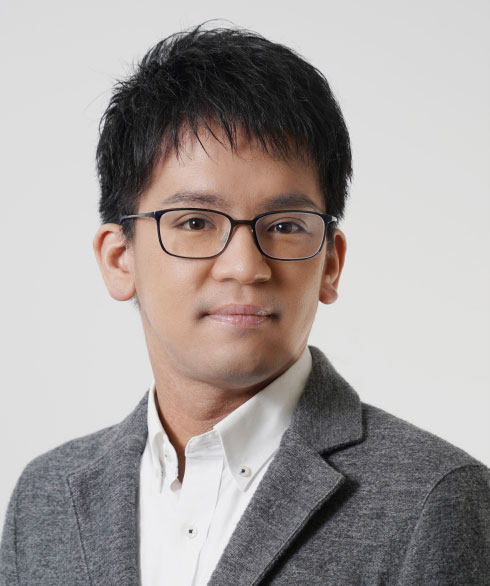
- 拡大
- Takuma Oue, COO, ExaWizards
Takuma Oue, COO of ExaWizards, a company that supports AI service development, says, “The core of business idea creation is to carefully analyze user-side problems and address them, thinking from the problem and not the technology. It’s essential to address general, society-wide problems.”
Especially for startups focused on ideas and speed, it’s important to not only have a macro perspective but also a micro mindset. This means first implementing solutions internally to test their effectiveness and then rapidly scaling up.
Oue also suggests that large enterprises should use their assets such as employees, customer bases, and accumulated internal data. “Major Japanese companies have tens or hundreds of thousands of employees, making it easy to gather large sample sizes. They already have potential customers for their products and services and can continuously collect and update data. These are advantages that startups don’t possess. Though cross-departmental communication and business scale can be challenging, large companies should leverage these advantages. Otherwise, it’s a missed opportunity.”
When it comes to Web3 and AI talent development, Oue emphasizes mindset over skills. Since failure is common in new business ventures, the key is a willingness to take on challenges, supported by a psychologically safe environment where individuals feel safe to express their ideas openly. Therefore, fostering psychological safety is crucial for effective organizational management.
Similarly, Ken Ishida from Nomura Securities’ Digital Company Strategy Department says experiencing success drives behavioral change. “Even small tasks can build confidence and change mindsets. Creating such an environment is vital for the organization.”
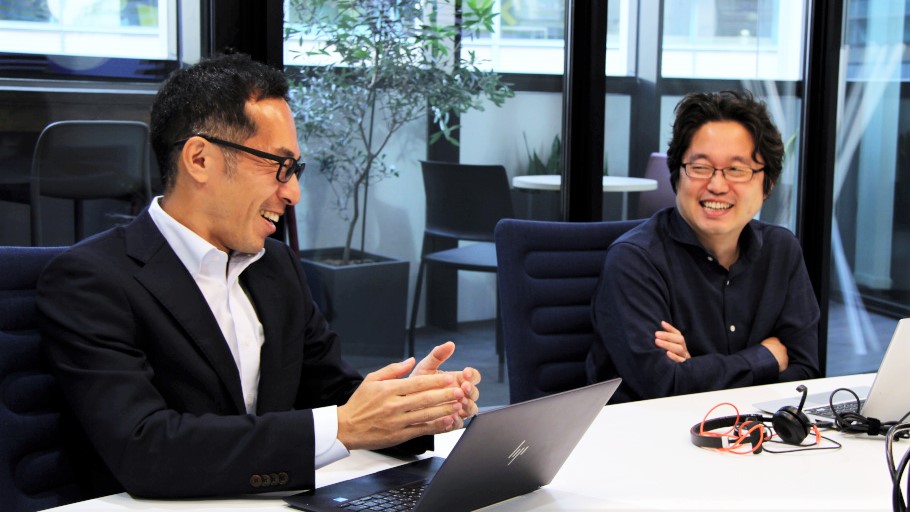
- 拡大
- Ken Ishida, Digital Company Strategy Department, Nomura Securities (left)
Toshinori Sasaki, Head of Digital Asset Strategy Office, Nomura Securities (right)

